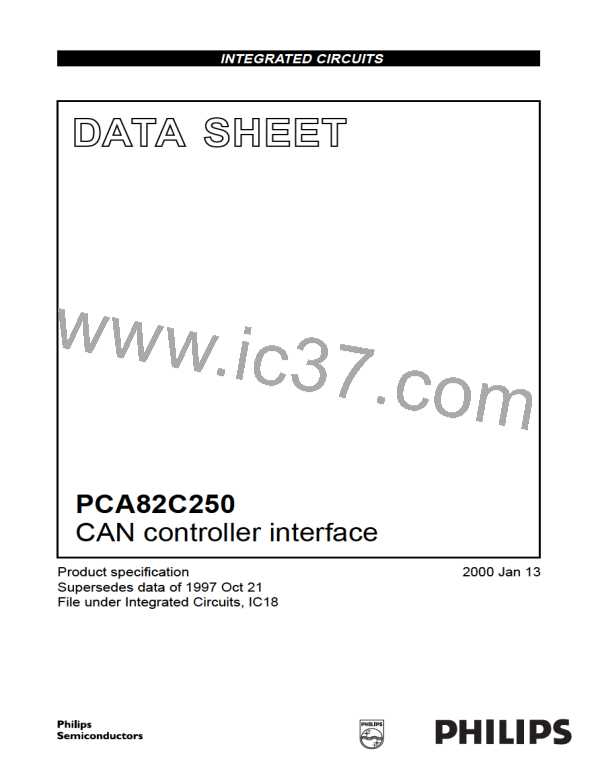Philips Semiconductors
Product specification
CAN controller interface
PCA82C250
FEATURES
APPLICATIONS
• Fully compatible with the “ISO 11898” standard
• High speed (up to 1 Mbaud)
• High-speed applications (up to 1 Mbaud) in cars.
GENERAL DESCRIPTION
• Bus lines protected against transients in an automotive
environment
The PCA82C250 is the interface between the CAN
protocol controller and the physical bus. The device
provides differential transmit capability to the bus and
differential receive capability to the CAN controller.
• Slope control to reduce Radio Frequency Interference
(RFI)
• Differential receiver with wide common-mode range for
high immunity against ElectroMagnetic Interference
(EMI)
• Thermally protected
• Short-circuit proof to battery and ground
• Low-current standby mode
• An unpowered node does not disturb the bus lines
• At least 110 nodes can be connected.
QUICK REFERENCE DATA
SYMBOL
VCC
PARAMETER
CONDITIONS
MIN.
4.5
MAX.
5.5
UNIT
supply voltage
supply current
V
ICC
standby mode
−
170
−
µA
Mbaud
V
1/tbit
VCAN
Vdiff
tPD
maximum transmission speed
CANH, CANL input/output voltage
differential bus voltage
non-return-to-zero
1
−8
1.5
−
+18
3.0
50
V
propagation delay
high-speed mode
ns
Tamb
ambient temperature
−40
+125
°C
ORDERING INFORMATION
TYPE
PACKAGE
NUMBER
NAME
DESCRIPTION
CODE
SOT97-1
SOT96-1
−
PCA82C250
PCA82C250T
PCA82C250U
DIP8
SO8
−
plastic dual in-line package; 8 leads (300 mil)
plastic small outline package; 8 leads; body width 3.9 mm
bare die; 2790 × 1780 × 380 µm
2000 Jan 13
2

 NXP [ NXP ]
NXP [ NXP ]